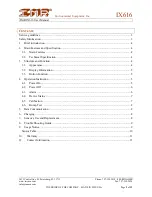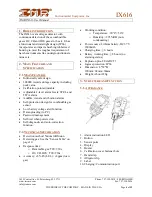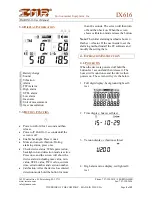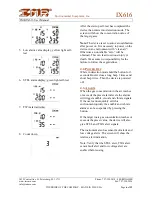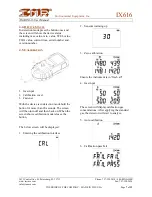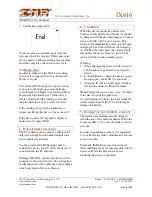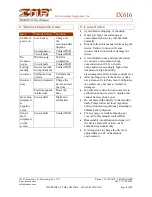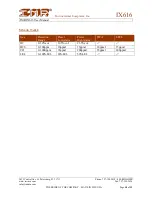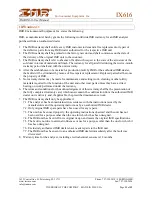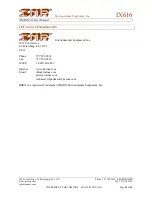
Environmental Equipment, Inc.
IX616
IMR IX616 User Manual
3632 Central Ave. St. Petersburg, FL 33711
Phone: 727-328-2818 / 800-RING-IMR
www.imrusa.com
Fax: 727-328-2826
info@imrusa.com
THE PRIDE OF THE COMPANY – MADE IN THE USA
Page
3
of
12
S
ERVICE GUIDELINES
1.
Thank you for purchasing this product. Before operation, please read this manual carefully to
help prevent any accidents or damage to the device due to miss use.
2.
Do not modify, repair, or replace parts in the device without contacting IMR, we assume no
liability for any harm caused due to improperly modified equipment.
3.
Any damage caused due to incorrect operation shall not be covered.
S
AFETY
I
NFORMATION
Before using the detector please carefully read the below safety information first and follow the
operation requirement:
1.
Do not use if damaged or defective. Before use check physical damage or missing parts.
2.
Each day before use it is recommended to perform a “bump test” to ensure the detector is
operation properly. See section 4.6
3.
It is recommended that a “bump test” be performed periodically to ensure that the audible, visual
and vibration alarms are set to the correct level and are functioning properly.
4.
Only use authorized accessories provided by IMR. Use of unauthorized accessories may result in
damage to the device.
5.
Only use the charger provided with the instrument to charge the detector. Only charge in a safe
environment. Charging in a hazardous environment is not advisable.
6.
Detectors using catalytic sensors or semi-conductor sensors cannot be exposed to gases with
concentrations over the detector’s range. Doing so will overload the detector and interfere with
its performance or even cause damage.
7.
Detectors using catalytic sensors or semi-conductor sensors cannot be exposed to gas
environments that contain lead compounds, sulfur compounds, phosphorous compounds or
silicon. These environments will damage a catalytic sensor or semi-conductor sensor.
8.
Detectors using catalytic sensors or semi-conductor sensors cannot be exposed to gas
environment which contain hydrogen sulfide, halogenated hydrocarbon or highly corrosive
environments. These environments will dampen the sensor’s response and decrease the sensor’s
sensitivity to gases. If the detector has to be used in the above environments. Then preform a
“bump test” after use.
9.
Do not expose the detector to electric shock, strong electromagnetic fields or intense continuous
mechanical vibration.
10.
Do not discard the battery in the standard trash. Please follow all local regulatory and
environment regulations pertaining to lithium battery disposal.
11.
Disassembly, modification, or repair of the detector by the end user is prohibited.
12.
Take precautions to prevent the detector from being dropped at high elevations and intense
vibration.
13.
For any usage or trouble shooting not covered in this manual contact IMR.


